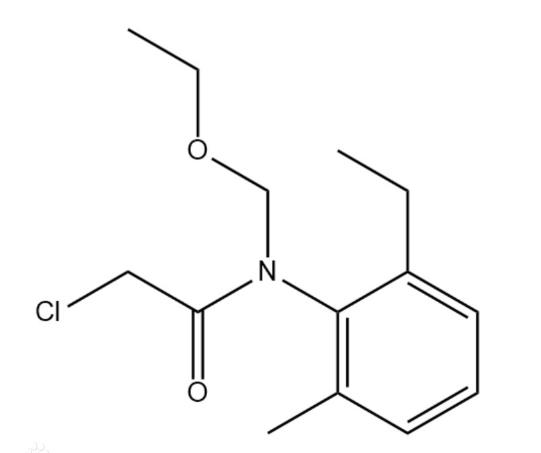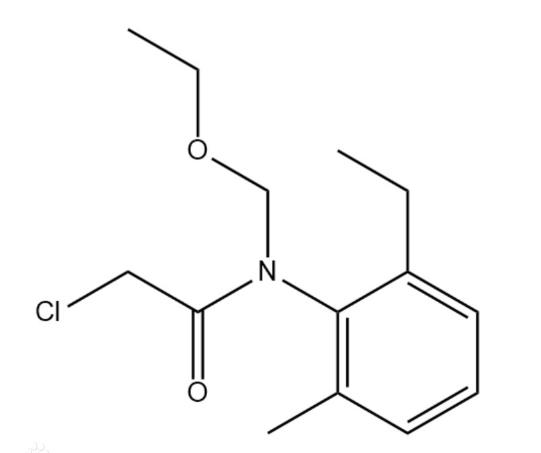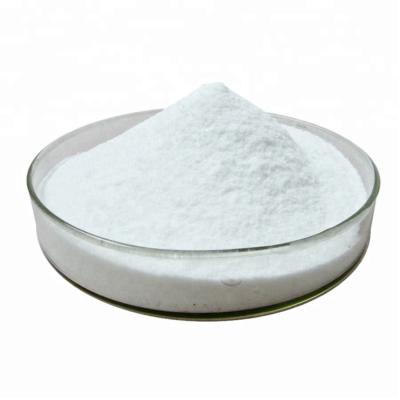Acetochlor
Product description:
It is mainly absorbed through the coleoptyl sheath of monocotyledon plants or hypocotyl of dicotyledon plants. After absorption, it is transmitted upward. It mainly inhibits cell growth by hindering protein synthesis, so that the growth of buds and young roots of weeds stops, and then dies. The acetochlor absorption ability of grass weeds is better than broad-leaf weeds, so the control effect of grass weeds is better than broad-leaf weeds.
Physical and chemical properties:
Chemical formula C14H20ClNO2
Density: 1.1 g/cm3
Boiling point: 391.5 ℃
Refractive index: 1.5272 (20℃)
Appearance: Light brown liquid

Toxicology :
1. Skin and eye irritation and toxicity
Rabbit skin Draize standard test: 500mg/24h
2. Acute toxicity
Rat transoral LD50:763mg/kg
Rat peritoneal LD50:1200mg/kg
Mice transoral LD50:1550mg/kg
Rabbit transoral LD50:600mg/kg
Rabbit skin LDLo: 1260mg/kg
3. Other multi-dose toxicity
Transoral TDLo of rats: 229mg/kg/42D-I
Usage:
Acetochlor is a pre-bud herbicide that can control annual grass weeds and some annual broadleaf weeds. It is suitable for weeding corn, cotton, peanut and soybean fields.
Weed control mechanism: Absorption is mainly through the coleoptyl sheath of monocotyledon plants or hypocotyl of dicotyledon plants. After absorption, it is transmitted upward, which inhibits cell growth mainly by hindering protein synthesis, so that the growth of buds and young roots of weeds stops, and then dies.
Submitted successfully
We will contact you as soon as possible




